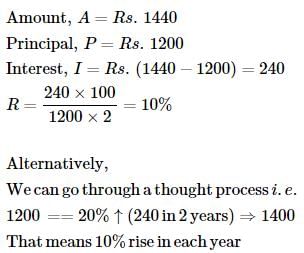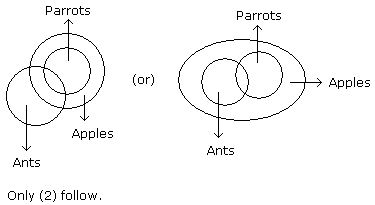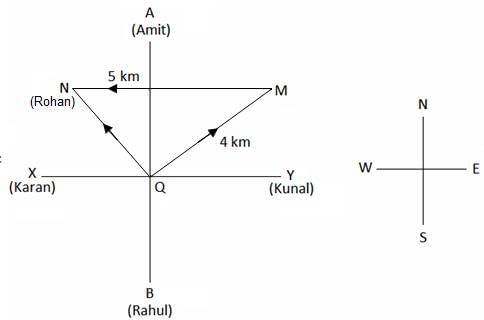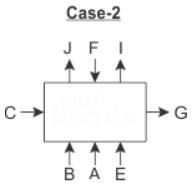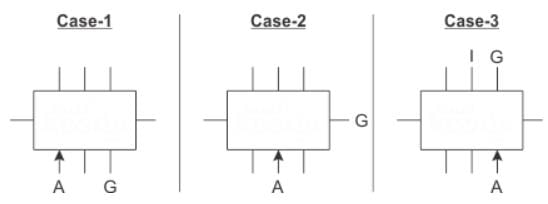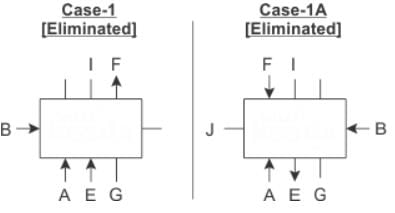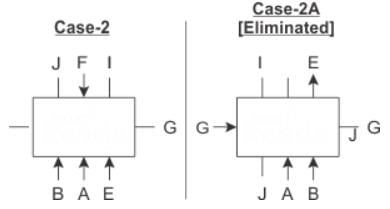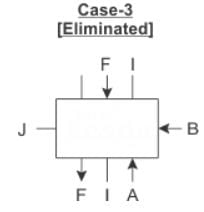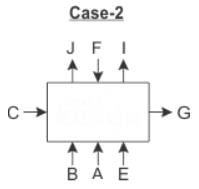Air Force Group Y Mock Test - 5 - Airforce X Y / Indian Navy SSR MCQ
30 Questions MCQ Test - Air Force Group Y Mock Test - 5
Find out the Synonym of the following word:
ADVERSITY
Read the each sentence to find out whether there is any grammatical error in it. The error, if any will be in one part of the sentence. The letter of that part is the answer. If there is no error, the answer is 'D'. (Ignore the errors of punctuation, if any).
In the following questions four alternatives are given for the idiom/phrase italicised and underlined in the sentence. Choose the alternative which best expresses the meaning of idiom/phrase.
Q. The party stalwarts have advised the President to take it lying down for a while.
The year 1973… (1)… a watershed in the economic….(2)…..of young male high school graduates in the United States. In the twenty four years…(3).. to this date, the medium income of 25 to 34 year old males, ….(4)… highest level of educational attainment was a high school diploma, ……(5)…. from $14,483 to $24,482 (in constant 1987 dollars.) This increase was the ….(6)… of the rapid growth of the U.S. economy..(7)… this period. As the expression goes, the rapidly growing economy was like a rising tide that…(8)… all boats. This rapid…(9)… in income permitted several generations of young high-school educated men to enjoy a higher standard of living….(10)…their fathers had.
Q. Find the word most appropriate for Blank No. 9
The year 1973… (1)… a watershed in the economic….(2)…..of young male high school graduates in the United States. In the twenty four years…(3).. to this date, the medium income of 25 to 34 year old males, ….(4)… highest level of educational attainment was a high school diploma, ……(5)…. from $14,483 to $24,482 (in constant 1987 dollars.) This increase was the ….(6)… of the rapid growth of the U.S. economy..(7)… this period. As the expression goes, the rapidly growing economy was like a rising tide that…(8)… all boats. This rapid…(9)… in income permitted several generations of young high-school educated men to enjoy a higher standard of living….(10)…their fathers had.
Q. Find the word most appropriate for Blank No. 10
Direction: In the questions given below a sentence is given with two blanks in each. Corresponding to each question two columns are given with three words in each column. Which combination of words from the two columns will perfectly fit into the blanks to make the sentence contextually correct and meaningful?
IIT-Bombay has been ______________ India’s best university for the second year in a row, ___________ a global ranking of 152 in the QS World University Rankings for 2020.

The active voice sentence "The dog chased the cat" can be changed to passive voice as:
Directions: Read the passage and answer the questions that follow:
Development is about expanding the capabilities of the disadvantaged, thereby improving their overall quality of life. Based on this understanding, Maharashtra, one of India’s richest States, is a classic case of a lack of development which is seen in its unacceptably high level of malnutrition among children in the tribal belts. While the State’s per capita income has doubled since 2004, its nutritional status has not made commensurate progress.
Poor nutrition security disproportionately affects the poorest segment of the population. According to NFHS 2015-16, every second tribal child suffers from growth restricting malnutrition due to chronic hunger. In 2005, child malnutrition claimed as many as 718 lives in Maharashtra’s Palghar district alone. Even after a decade of double digit economic growth (2004-05 to 2014-15), Palghar’s malnutrition status has barely improved.
In September 2016, the National Human Rights Commission issued notice to the Maharashtra government over reports of 600 children dying due to malnutrition in Palghar. The government responded, promising to properly implement schemes such as Jaccha Baccha and Integrated Child Development Services to check malnutrition. Our independent survey conducted in Vikramgad block of the district last year found that 57%, 21% and 53% of children in this block were stunted, wasted and underweight, respectively; 27% were severely stunted. Our data challenges what Maharashtra’s Women and Child Development Minister said in the Legislative Council in March — that “malnutrition in Palghar had come down in the past few months, owing to various interventions made by the government.”
Stunting is caused by an insufficient intake of macro- and micro-nutrients. It is generally accepted that recovery from growth retardation after two years is only possible if the affected child is put on a diet that is adequate in nutrient requirements. A critical aspect of nutrient adequacy is diet diversity, calculated by different groupings of foods consumed with the reference period ranging from one to 15 days. We calculated a 24-hour dietary diversity score by counting the number of food groups the child received in the last 24 hours. The eight food groups include: cereals, roots and tubers; legumes and nuts; dairy products; flesh foods; eggs; fish; dark green leafy vegetables; and other fruits and vegetables.
In most households it was rice and dal which was cooked most often and eaten thrice a day. These were even served at teatime to the children if they felt hungry. There was no milk, milk product or fruit in their daily diets. Even the adults drank black tea as milk was unaffordable. Only 17% of the children achieved a minimum level of diet diversity — they received four or more of the eight food groups. This low dietary diversity is a proxy indicator for the household’s food security too as the children ate the same food cooked for adult members.
Q. Which of the following strengthen the claim that the nutrition indicators fare poorly in India?
I. Stunting declined from 46.3% in 2005 to 34.4% in 2016.
II. As per an NHFS survey, wasting rates have increased from 16.5% to 25.6% over a period of 10 years.
III. The underweight rate (36%) has remained static in the last 10 years.
Directions: Read the passage and answer the questions that follow:
Development is about expanding the capabilities of the disadvantaged, thereby improving their overall quality of life. Based on this understanding, Maharashtra, one of India’s richest States, is a classic case of a lack of development which is seen in its unacceptably high level of malnutrition among children in the tribal belts. While the State’s per capita income has doubled since 2004, its nutritional status has not made commensurate progress.
Poor nutrition security disproportionately affects the poorest segment of the population. According to NFHS 2015-16, every second tribal child suffers from growth restricting malnutrition due to chronic hunger. In 2005, child malnutrition claimed as many as 718 lives in Maharashtra’s Palghar district alone. Even after a decade of double digit economic growth (2004-05 to 2014-15), Palghar’s malnutrition status has barely improved.
In September 2016, the National Human Rights Commission issued notice to the Maharashtra government over reports of 600 children dying due to malnutrition in Palghar. The government responded, promising to properly implement schemes such as Jaccha Baccha and Integrated Child Development Services to check malnutrition. Our independent survey conducted in Vikramgad block of the district last year found that 57%, 21% and 53% of children in this block were stunted, wasted and underweight, respectively; 27% were severely stunted. Our data challenges what Maharashtra’s Women and Child Development Minister said in the Legislative Council in March — that “malnutrition in Palghar had come down in the past few months, owing to various interventions made by the government.”
Stunting is caused by an insufficient intake of macro- and micro-nutrients. It is generally accepted that recovery from growth retardation after two years is only possible if the affected child is put on a diet that is adequate in nutrient requirements. A critical aspect of nutrient adequacy is diet diversity, calculated by different groupings of foods consumed with the reference period ranging from one to 15 days. We calculated a 24-hour dietary diversity score by counting the number of food groups the child received in the last 24 hours. The eight food groups include: cereals, roots and tubers; legumes and nuts; dairy products; flesh foods; eggs; fish; dark green leafy vegetables; and other fruits and vegetables.
In most households it was rice and dal which was cooked most often and eaten thrice a day. These were even served at teatime to the children if they felt hungry. There was no milk, milk product or fruit in their daily diets. Even the adults drank black tea as milk was unaffordable. Only 17% of the children achieved a minimum level of diet diversity — they received four or more of the eight food groups. This low dietary diversity is a proxy indicator for the household’s food security too as the children ate the same food cooked for adult members.
Q. What could possibly be a/some possible reason/s for such extreme food insecurity among tribal households as has been shown in the passage?
I. Loss of their traditional dependence on forest livelihood.
II. Weak implementation of public nutrition schemes.
III. A worsening agriculture situation.
Directions: Read the passage and answer the questions that follow:
Development is about expanding the capabilities of the disadvantaged, thereby improving their overall quality of life. Based on this understanding, Maharashtra, one of India’s richest States, is a classic case of a lack of development which is seen in its unacceptably high level of malnutrition among children in the tribal belts. While the State’s per capita income has doubled since 2004, its nutritional status has not made commensurate progress.
Poor nutrition security disproportionately affects the poorest segment of the population. According to NFHS 2015-16, every second tribal child suffers from growth restricting malnutrition due to chronic hunger. In 2005, child malnutrition claimed as many as 718 lives in Maharashtra’s Palghar district alone. Even after a decade of double digit economic growth (2004-05 to 2014-15), Palghar’s malnutrition status has barely improved.
In September 2016, the National Human Rights Commission issued notice to the Maharashtra government over reports of 600 children dying due to malnutrition in Palghar. The government responded, promising to properly implement schemes such as Jaccha Baccha and Integrated Child Development Services to check malnutrition. Our independent survey conducted in Vikramgad block of the district last year found that 57%, 21% and 53% of children in this block were stunted, wasted and underweight, respectively; 27% were severely stunted. Our data challenges what Maharashtra’s Women and Child Development Minister said in the Legislative Council in March — that “malnutrition in Palghar had come down in the past few months, owing to various interventions made by the government.”
Stunting is caused by an insufficient intake of macro- and micro-nutrients. It is generally accepted that recovery from growth retardation after two years is only possible if the affected child is put on a diet that is adequate in nutrient requirements. A critical aspect of nutrient adequacy is diet diversity, calculated by different groupings of foods consumed with the reference period ranging from one to 15 days. We calculated a 24-hour dietary diversity score by counting the number of food groups the child received in the last 24 hours. The eight food groups include: cereals, roots and tubers; legumes and nuts; dairy products; flesh foods; eggs; fish; dark green leafy vegetables; and other fruits and vegetables.
In most households it was rice and dal which was cooked most often and eaten thrice a day. These were even served at teatime to the children if they felt hungry. There was no milk, milk product or fruit in their daily diets. Even the adults drank black tea as milk was unaffordable. Only 17% of the children achieved a minimum level of diet diversity — they received four or more of the eight food groups. This low dietary diversity is a proxy indicator for the household’s food security too as the children ate the same food cooked for adult members.
Q. Which of the following is/are true as per the passage?
I. India’s situation is worse than in some of the world’s poorest countries — Bangladesh, Afghanistan or Mozambique.
II. Development is more than just economic growth.
III. On an average, the nutrition expenditure as a percentage of the Budget has drastically declined from 1.68% in 2012-13 to 0.94% in 2018-19.
Directions: Out of the given alternatives, choose the one which can be substituted for the given words/sentence.
A person who is womanish in his habits
Find the rate of interest if the amount after 2 years of simple interest on a capital of Rs. 1200 is Rs. 1440.
Find the 4-digit smallest number which when divided by 12, 15, 25, 30 leaves no remainder?
Directions to Solve
In each of the following questions, five words have been given out of which four are alike in some manner, while the fifth one is different. Choose the word which is different from the rest.
Question -
Choose the word which is different from the rest.
Directions to Solve
In each of the following questions find out the alternative which will replace the question mark.
Question -
KeaC : CaeK :: XgmF : ?
Directions to Solve
In each of the following questions two statements are given and these statements are followed by two conclusions numbered (1) and (2). You have to take the given two statements to be true even if they seem to be at variance from commonly known facts. Read the conclusions and then decide which of the given conclusions logically follows from the two given statements, disregarding commonly known facts.
Question -
Statements: Some ants are parrots. All the parrots are apples.
Conclusions:
- All the apples are parrots.
- Some ants are apples.
If A + B means A is the brother of B; A - B means A is the sister of B and A x B means A is the father of B. Which of the following means that C is the son of M?
Who was the first Indian batsman to hit a century on Test debut against England at England's home?
Find the one which does not belong to that group ?
Directions: Study the following information carefully to answer the given question.
There are two axes AB and XY such that A is in north, B is in south, X is in west and Y is in east. Q is the point of intersection of both the axes. At A, B, X and Y, there are houses of 4 friends - Amit, Rahul, Karan and Kunal, respectively. Another friend Rohan is standing at the point 'Q' facing north-east direction. He then walks 4 km in the same direction which he is facing and reaches 'M'. Then he turns 135° anticlockwise and walks 5 km straight and reaches 'N'. Amit starts walking towards south from his house and reaches point Q. After reaching Q, Rohan tells Amit to meet him at N; so Amit travels the shortest distance possible to reach N in the end where he meets Rohan.
Q. Point 'M' is in which direction with respect to Rahul's house?
In which country did India's High Commission unveil the Subarno Jayanti-ICCR Scholarship Program?
Direction : Study the following question carefully and choose the right answer.
Q: In a certain code RAIN is written as TCKP. How is CLOUD written in that code?
Direction : Study the following question carefully and choose the right answer.
Q: If in a code language ‘PUTREFY’ is written as ‘XPQSTRL’ and ‘NAVIGATE’ is written as ‘GYMOWYQT’ how is ‘AVIARY’ written in that language?
Directions: Read the following information carefully and answer the questions given beside.
Eight persons viz. A, B, C, E, F, G, I and J sit around a rectangular table such that three persons sit on each longer side and one person sits on each shorter side. Nobody sits at the corners. The persons whose name starts with vowel do not sit on the shorter side of the table. Three of them face away from centre while the rest five face towards the centre.
B, who faces centre sits second to the left of E. J is on the immediate right of F, who is at a gap of two persons from E. Neither C nor A face away from centre. The immediate neighbors of F face away from centre. G is second to the right of A. I is on the immediate left of F. I is neither adjacent to A nor to C. E is adjacent to G.
Q. Who is third to the right of I?



